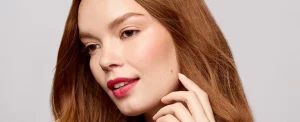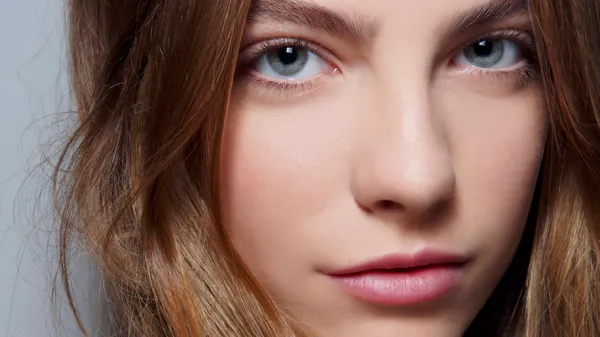Understanding color theory in brow enhancement is crucial for achieving flawless results. By understanding color warmth, undertones, and the color wheel, artists can choose complementary shades that blend seamlessly with natural features. Selecting the perfect brow shade involves considering skin tone and hair color to create a cohesive look that enhances natural beauty. Techniques like adjusting intensity levels and blending colors are essential for creating customized tones. Applying color theory principles ensures a cohesive and aesthetically pleasing design. Advanced techniques cater to individual skin tones, enhancing the overall aesthetic and producing natural-looking outcomes. Proficiency in color theory is essential for elevating brow artistry.
Key Takeaways
- Color theory guides artists in choosing complementary hues for optimal brow enhancement results.
- Understanding color temperature, undertones, and the color wheel is essential for effective manipulation.
- Choosing the right brow color involves considering skin tone, hair color, and desired appearance.
- Balancing saturation levels, creating gradients, and customizing shades are key techniques for brow artists.
- Undertones in brow color are crucial for harmonious results, matching them with skin undertones for flattering outcomes.
Importance of Color Theory in Brow Enhancement
Understanding hue theory in brow improvement is crucial for achieving optimal results in the art of improving eyebrows. The right implementation of hue theory guarantees that the selected brow enhancements harmonize with the client’s natural characteristics, skin tone, and hair color. This understanding enables brow artists to create looks that effortlessly blend with the client’s overall aesthetic, elevating their appearance and boosting their self-assurance.
Fundamentals of Color Theory for Brows
The fundamental principles of color theory play a vital role in the domain of eyebrow improvement, guiding artists in the choice of hues that best complement the client’s distinctive features. Understanding color temperature, undertones, and the color wheel is necessary for creating harmonious brow enhancements. Artists must grasp how different colors interact and how to manipulate them effectively to achieve desired results that boost natural beauty.
Choosing the Right Brow Color
Choosing the most suitable brow shade is a crucial step in achieving excellent results in brow enhancement procedures. Brow color selection should take into account factors such as skin tone, hair color, and desired appearance. Warm tones complement individuals with golden or olive undertones, while cool tones suit those with pink or blue undertones. Understanding these subtleties guarantees the chosen brow color harmonizes seamlessly with the client’s features.
Color Theory Techniques for Brow Artists
Utilizing hue theory techniques is essential for brow artists to achieve precise and harmonious results in brow improvement procedures.
- Understanding color temperature
- Recognizing color undertones
- Balancing saturation levels
- Creating color gradients
- Customizing shades for individual clients
Color Harmony in Brow Design
Color harmony in brow design involves e aspects such as brow color selection and balancing brow tones. The selection of the right color for the individual’s brows is e to e a natural and harmonious look. Balancing brow tones is c important in achieving a c and aesthetically pleasing brow design.
Brow Color Selection
In achieving optimal brow design, the thoughtful selection of colors to mix with natural features plays a pivotal role.
- Take into account the client’s skin undertone.
- Assess hair color for suitability.
- Select a hue slightly lighter than hair color.
- Opt for warm tones to infuse warmth.
- Steer clear of shades that are too deep or too cool.
Balancing Brow Tones
Achieving a harmonious balance of brow shades is vital in creating a unified and visually pleasing brow design. By carefully selecting tones that complement each other, brow artists can improve facial features effectively. Understanding color theory principles such as complementary, analogous, or monochromatic color schemes helps in achieving this balance. Utilizing these concepts guarantees that the brow tones harmonize seamlessly, resulting in a polished and unified look.
Understanding Undertones in Brow Color
When considering brow color, understanding undertones is essential for achieving harmonious results. Brow undertones can be classified into warm and cool tones, each impacting the overall appearance of the brows. Identifying these undertones is fundamental in selecting the most flattering brow color for each individual.
Brow Undertone Basics
Understanding the fundamentals of brow undertones is crucial for mastering the art of brow color selection and improvement.
- Brow undertones can be warm, cool, or neutral.
- Warm undertones have hints of red, yellow, or orange.
- Cool undertones have hints of blue, pink, or purple.
- Neutral undertones have a balance of warm and cool tones.
- Matching brow undertones with skin undertones elevates overall appearance.
Identifying Warm Undertones
In the domain of brow color selection and improvement, a crucial aspect lies in the precise identification of warm undertones, a pivotal element in achieving harmonious and flattering results. Warm undertones, characterized by hints of yellow, peach, or gold, can add warmth and depth to brow color, elevating the overall appearance. Understanding and recognizing these undertones are vital for creating natural-looking and aesthetically pleasing brow enhancements.

Cool Undertones in Brows
Relaxing undertones in brows play a significant role in the realm of brow color selection and improvement, contributing to the overall balance and aesthetic appeal of the eyebrows.
- Undertones can be classified as cool or warm.
- Cool undertones in brows are characterized by hues like ash blonde and taupe.
- They complement cool-toned skin.
- Cooler undertones create a softer, more natural look.
- Understanding cool undertones is essential for achieving harmonious brow color.
Advanced Color Theory Applications for Brows
Advanced Shade Theory Applications for Brows involve detailed pigmentation techniques that cater to individual skin tones and undertones, elevating the overall aesthetic appeal of the brows. By considering factors such as skin undertones, pigment selection, and shade blending, brow artists can create harmonious and natural-looking results. Understanding the intricacies of shade theory in brow enhancement allows for personalized and precise applications that complement each client’s unique features.
Frequently Asked Questions
How Can Brow Artists Use Color Theory to Create a More Natural and Harmonious Brow Design?
Brow artists can utilize color theory to craft natural and harmonious brow designs by understanding the principles of color mixing, undertones, and skin tones. This knowledge facilitates precise color selection and customization for each client, achieving aesthetically pleasing results.
What Are Some Advanced Color Theory Techniques That Can Be Applied Specifically for Brow Enhancement?
Advanced hue theory techniques for brow improvement include understanding undertones, color warmth, and pigment saturation. Utilizing complementary colors to rectify imperfections, mastering color blending for custom shades, and considering skin tone for the most natural results are crucial.
How Do Undertones Play a Role in Choosing the Right Brow Color for Different Skin Tones?
Undertones are essential in selecting the perfect brow color for a variety of skin tones. Understanding warm, cool, or neutral undertones guides the choice of brow shades that harmonize with skin undertones. This knowledge boosts brow artistry outcomes significantly.
Can You Provide Examples of How Color Harmony Can Be Achieved in Brow Design Using Color Theory Principles?
Color harmony in brow design can be achieved by understanding color theory principles. Utilize opposite colors, similar colors, or triadic color schemes to create balance and cohesion in brow color selection. This precise method guarantees aesthetically pleasing outcomes.
Are There Specific Considerations or Tips for Brow Artists When Selecting the Right Brow Color Based on Color Theory Fundamentals?
When selecting the right brow hue based on hue theory fundamentals, consider factors like skin undertone, existing strand shade, and personal style preferences. Opt for tints that complement each other to create harmonious and natural-looking brows.
Conclusion
A thorough understanding of color theory is crucial for brow artists to achieve harmonious and flattering results in brow enhancement. By mastering the basics of color theory, selecting the appropriate brow color, and applying advanced techniques, professionals in the beauty industry can enhance their artistry and provide clients with transformative results. The interplay of hues, tones, and undertones is vital in creating stunning and natural-looking brows that are tailored to individual preferences and features.
You May Also Like:




